Variety and use of anchor lines
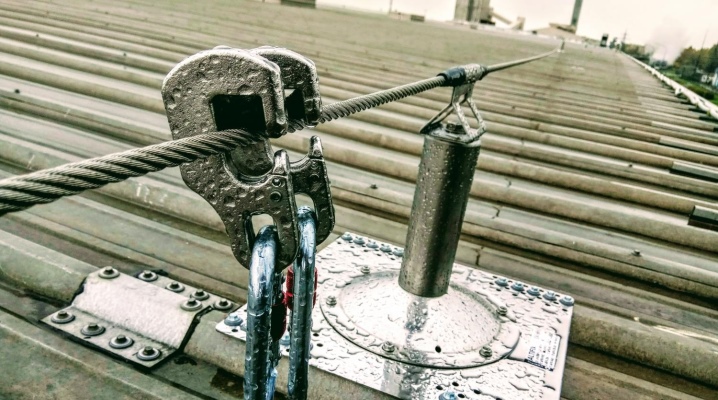
During assembly work at high heights, safety is very important. To provide it, use anchor lines. They come in different types, molded in design, length and scope. Let's consider them in more detail.
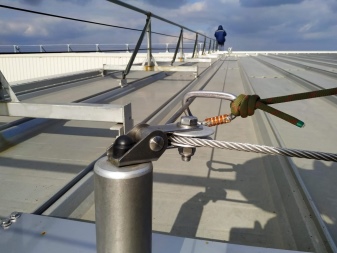
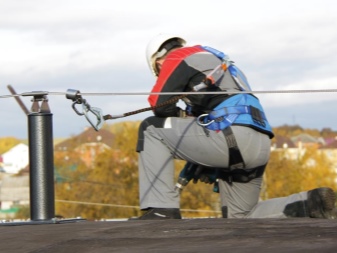
What it is?
Anchor line is a structure designed for safe installation work at height.
These systems usually consist of a metal cable attached to a support block.
Connecting and shock-absorbing components are attached to it, ensuring the safe movement of the worker when performing construction and installation work at high-rise buildings.

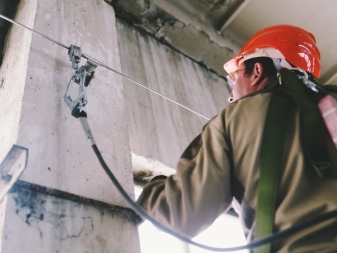
Device and design
All means that provide protection against falls from a height have an anchor mechanism, connecting and shock-absorbing additional systems, a safety belt. The most important task is the selection of anchor parts, they are most responsible for minimizing the number of risks. Fasteners - anchors, are divided into several varieties.
- Eye anchors, - the most common, used in work with stationary installations, mounted on a support, in rare cases suitable for portable structures.
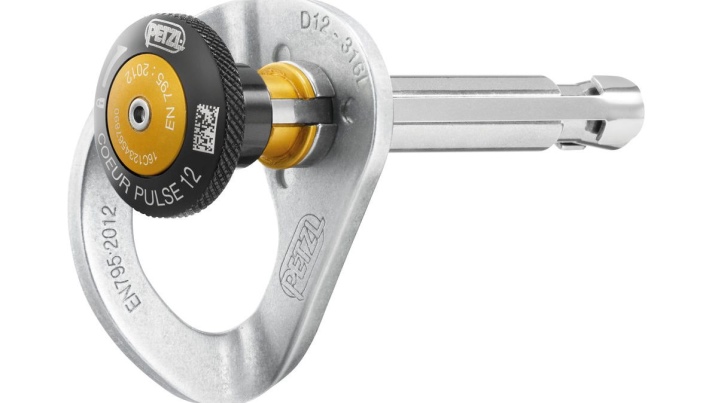
- Slings and loops - suitable for working with portable anchoring structures, are used to connect additional systems. They are made of textile tape or on the basis of a steel cable. Operation takes place with constant contact of the rope with sharp edges.
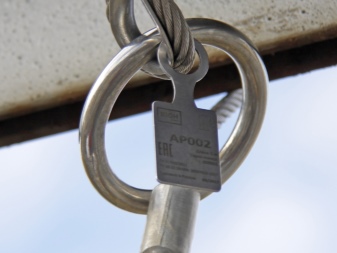
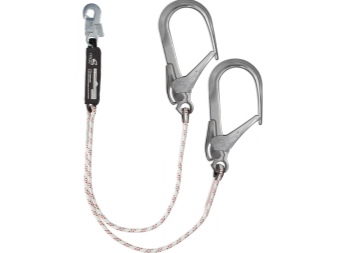
- Carbines - they are also used for fastening the subsystem, most often these are carabiners that close automatically (A class).
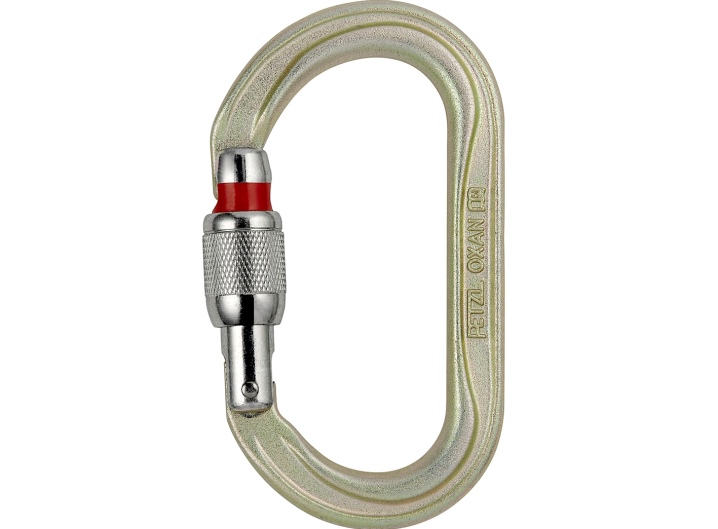
- Beam brackets - belong to the mobile group, designed for fastening to metal horizontal T-bars (beams). Some devices have movable rollers to move the support piece along the brand.
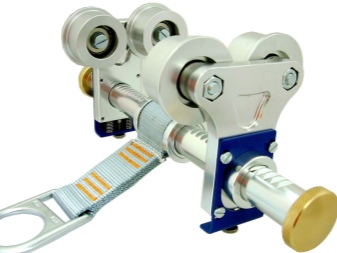
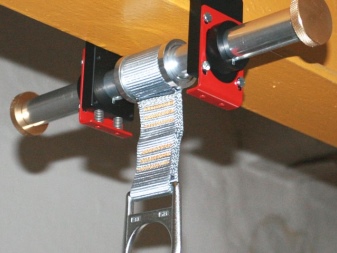
- Opening anchors, - device of a mobile group for installation in the openings of doors, windows, hatches. Little used protective equipment requires careful preparation of the security system at a certain point. The crossbeam of the structure is made in the form of an anchor, on which parts of the spacer are located. Usually used in the rescue field.

- Tripods, tripods, multipods - are intended for operation in confined spaces and for carrying out rescue and evacuation measures. Anchors of this type make it possible to raise the installed additional system above the zero line, that is, above the level of the leg support.
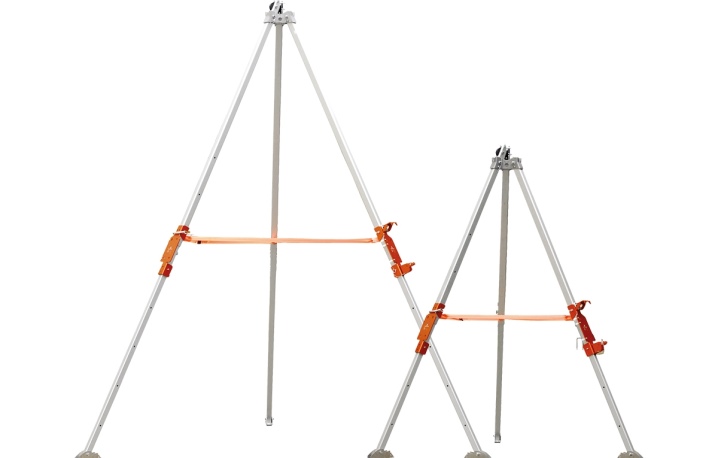
- L-shaped anchors - also needed for operation in an enclosed space, provide safety near the edge of the roof, as a safety net when moving on stairs. Allows you to fix the system to the desired height.
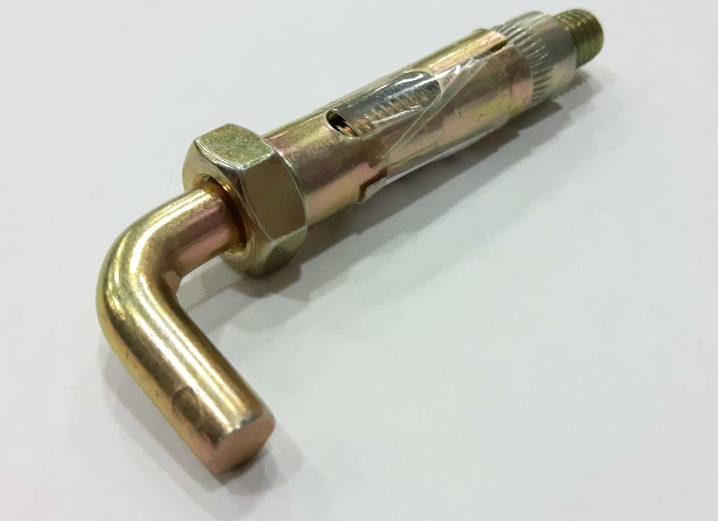
- Counterbalanced devices, - play the role of a safety component that holds the structure when attached to the building. They have the appearance of a base with a counterweight. The anchoring point is a column with a moving eye, to which an additional system is attached.
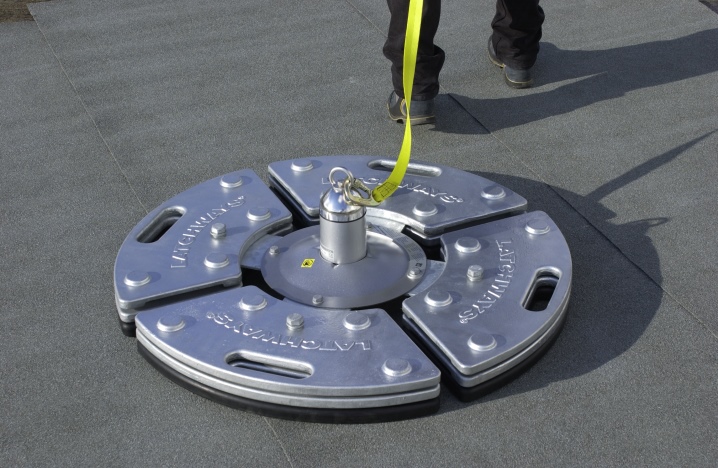
- Anchor posts - allow to raise the level of fastening of the additional system above the zero point. They are used when it is necessary to reduce the jerk factor, to install mechanisms with a small headroom.
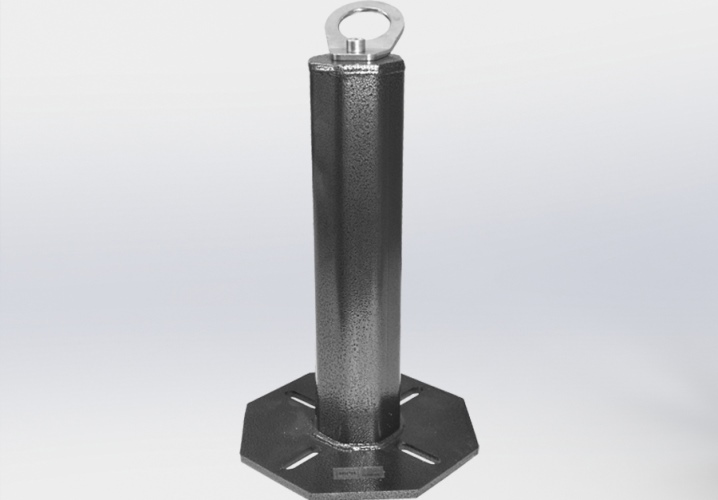
Equipment and requirements
Each line has its own complete set... For flexible, a metal cable, intermediate and final anchors, dampers - (shock absorbers) in the event of a worker breakdown, reduce the load on the fasteners of the structure, mobile mechanisms, the system for tensioning cables and ropes.
Some line types are characterized by a rail support system, connection parts and restraints, fixed fasteners, and a moving anchor point.
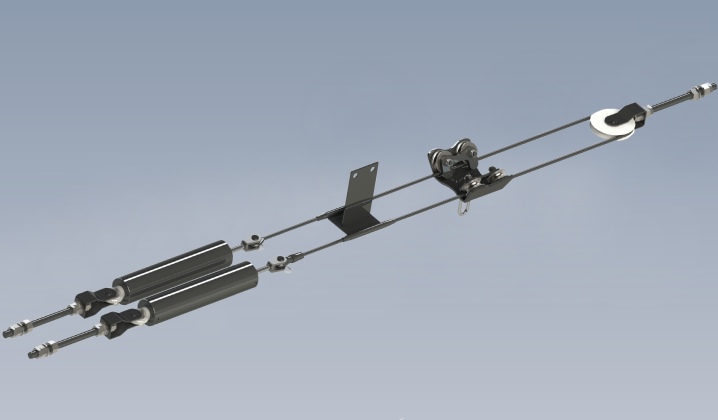
The international standard GOST EN 795-2014 "Occupational safety standards system ... General technical requirements ..." sets the following requirements for the use of various anchor lines.
- These systems must be supplied with fasteners for the bearing sections of buildings. When using a sling (cable), a mechanism is required to tension it, which provides a comfortable installation, removal, movement and replacement of the cable.
- The design should minimize the chance of hand injury.
- The cable must be installed not below the level of the support surface.
- If the movement of the worker involves a transition along support structures between vertical beams, the rope is launched at a height of 1.5 meters above the support plane.
- The presence of intermediate supports is mandatory if the size of the cable is more than 12 meters. The surface of the structure of the structure must be free of sharp edges.
- The tensile strength of the rope, installed from the support surface higher than 1.2 meters, must be at least 40400 Newtons. If the attachment height is less than 1.2 meters, the force should be 56,000 Newtons.
- The thickness of the cable is from 8 millimeters.
- The working properties of parts should not change with temperature drops and increased humidity. Corrosion can be eliminated by using a special anti-corrosion coating applied to metal elements.
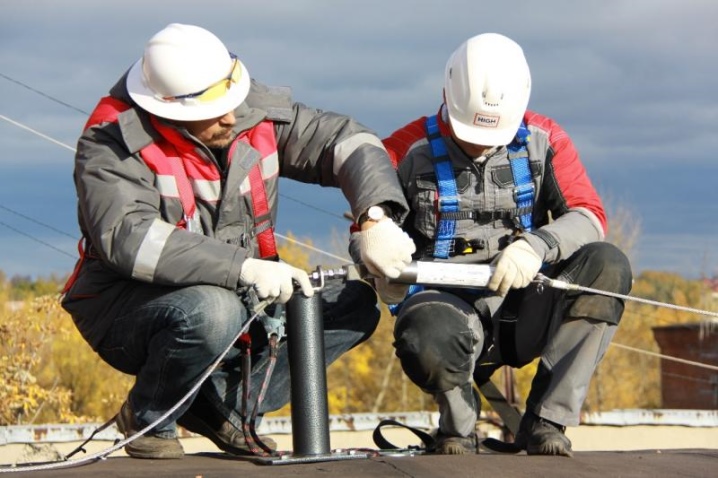
Species overview
There are many areas of social life in which structures such as anchor lines are needed. They are used in construction work, in towers and in the repair of power grids. Wherever safety at high altitude is important, different types of systems are used. They are divided according to the following criteria.
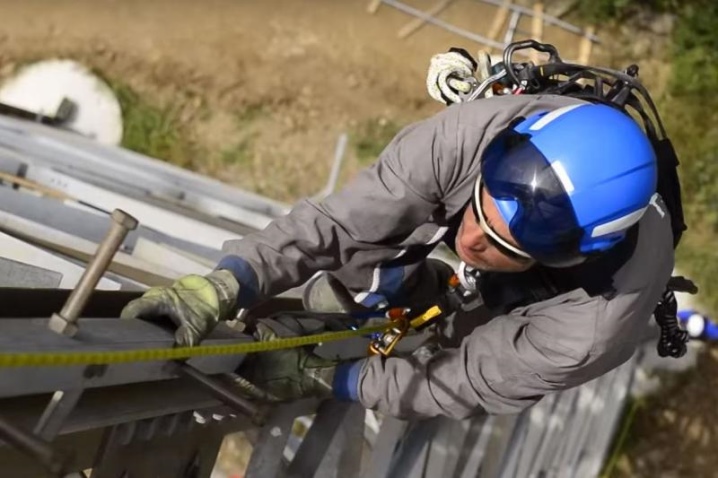
Structural Orientation
Depending on the type of work, they are classified into two types.
Horizontal
Used in restraint and belay systems... These lines, with synthetic rope or cable, have a tensioning mechanism.
To avoid an increase in the load on the supports, the tensile force should be no more than that recommended by the manufacturer.
The horizontal structure is suitable for roof work and pitched roof maintenance.
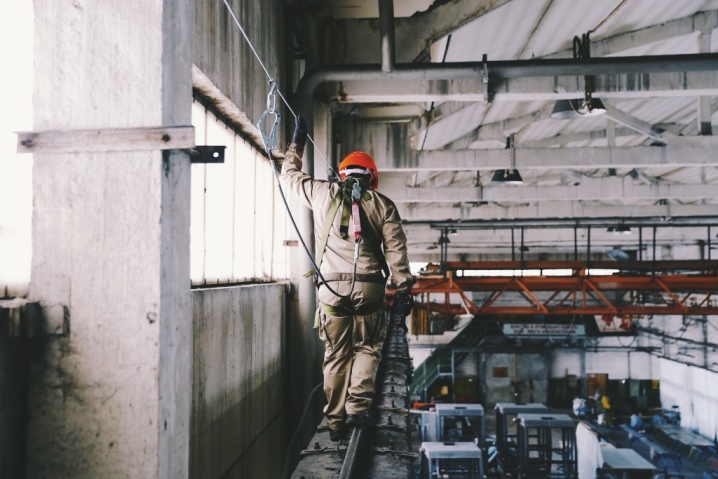
Vertical
Designed for movement on a plane located vertically or at an angle. To connect the worker, a slider-type blocking device is used, which is fixed on the machine in case the worker fell from a height.
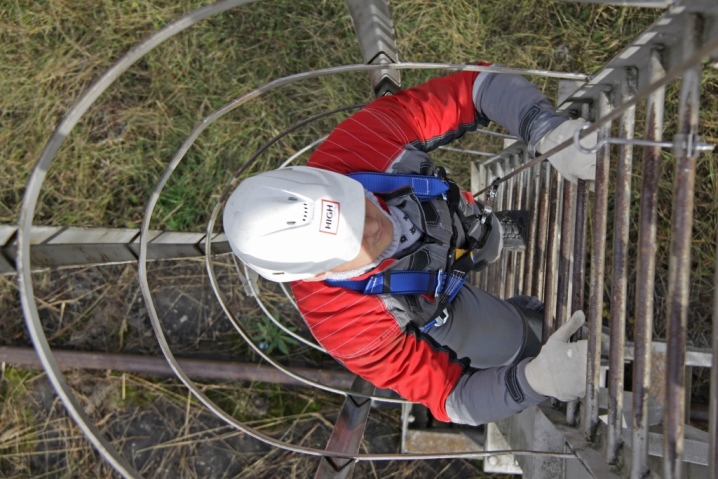
Time of use
According to this criterion, they are divided into the following types.
- Temporary - after the work is finished, lines of this type are no longer used. They are quite cheap, but less durable and safe.
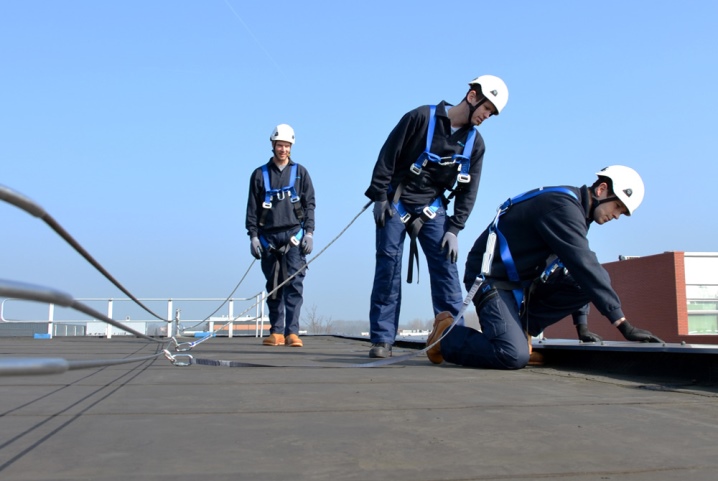
- Permanent - are needed for permanent construction work high above the ground. With careful inspection and replacement, parts remain durable and of high quality for a long period.
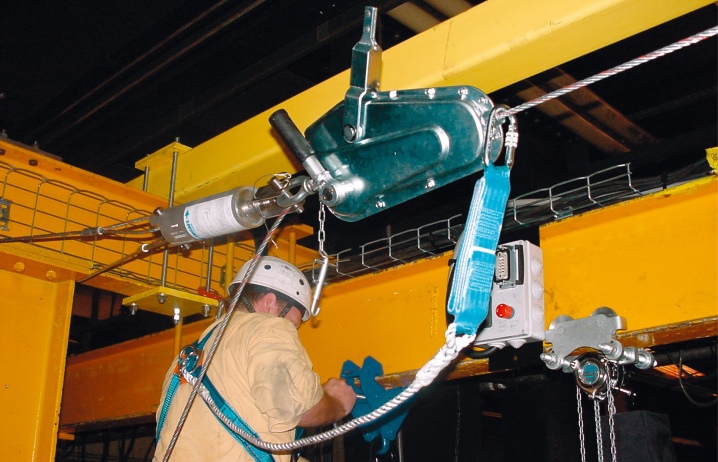
Anchor lines are classified both by the material from which they are made and by the structural features of the systems.
Allocate flexible and tough anchor lines. Let's consider them in more detail.
Flexible
Wire rope is considered an important feature of their structure., which is the carrier (main) part of the lines. Installation can take place not only vertically, but also horizontally - it all depends on the type of work. It is fastened with end anchors, which are located every 10-12 meters. To reduce the load in the event of a worker falling, dampers and shock absorbers are used.
Among them are single-line (when there is only one guide in the structure along which the anchor point moves) and two-line (when there are two guides).
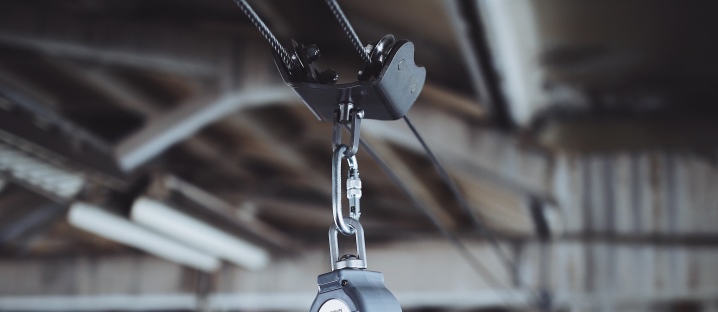
The former are more often used for the movement of people, and the latter for horizontal movement.
Flexible anchor lines are divided into permanent and temporary... In turn, permanent or stationary are divided into cable, tape and rope. All of them are needed for a variety of work - from lifting workers to evacuating people.
Use is possible in any conditions, the most important thing is they must be protected against damage from sharp edges. They are installed at an angle of 75-180 degrees, which minimizes the risk of disruption of workers. Flexible lines can be attached to any surface.
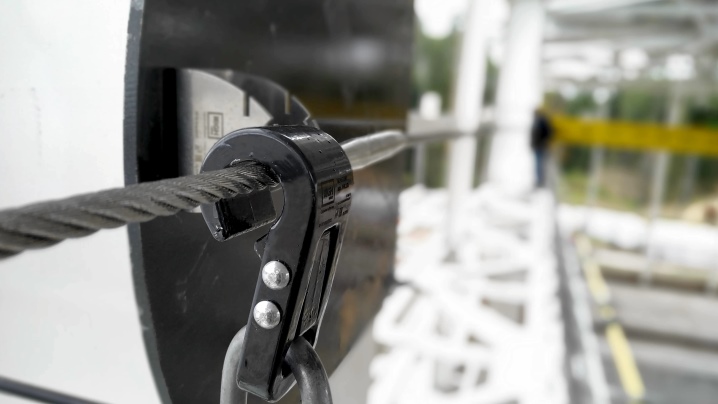
Hard
These systems are somewhat different in their structure from flexible ones - here the line looks like a straight or curved rail. Large steel beams are taken as a basis, along which a special carriage moves. It can be with or without rollers.
Safety cables are attached to this structural element. The pressure on the cable during the fall is softened by the shock absorbers.
Rigid anchor lines (RL) are mounted to the building in such a way as to limit the possibility of displacement of the side lines. They are fastened by means of end or intermediate anchors, which depends on the place of attachment of the beam to the surface. Such a safety structure is mounted for a long period and is used constantly. Compared to flexible lines, installation time and costs are higher.
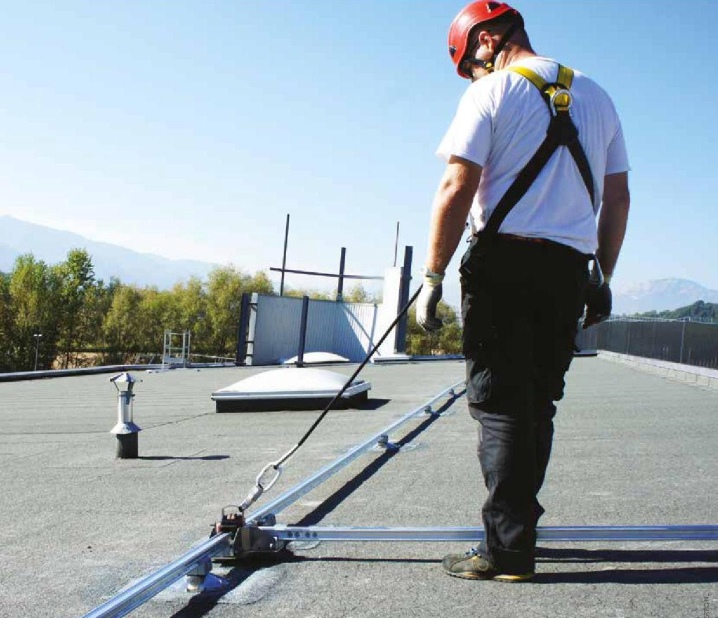
Materials (edit)
For the manufacture of cables, fasteners and elements for connection is used stainless steel, and for the production of ropes - polyamide fibers with aramid coating. Requirements for materials - strength and wear resistance, resistance to corrosion and temperature extremes; for rescue and welding work - fireproof.
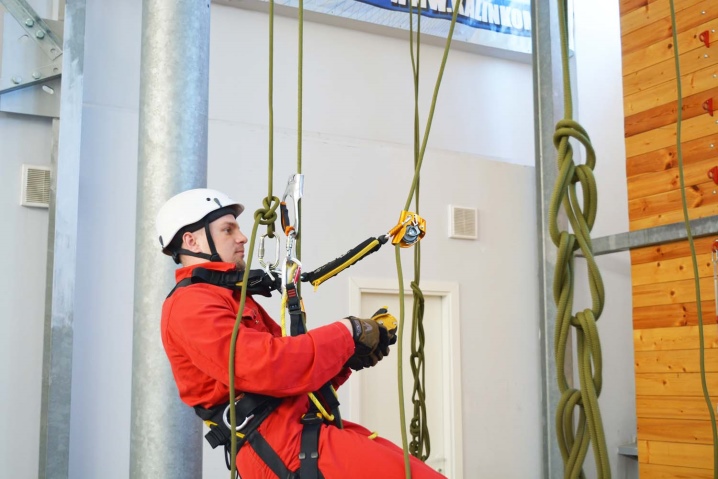
Selection Tips
When choosing an anchor line, you should rely on the following criteria;
- required length - the calculation takes into account the area of work and the technical condition of the supporting structure;
- headroom - the calculation starts from the surface on which the worker is standing, to the point of contact, if a breakdown occurs;
- fall factor - from 0 to 1 occurs when the attachment point of the system is above the worker; from 1 to 2 - the attachment point is located below the worker, this factor can cause serious injury;
- the number of workers on the same line at the same time.

Features of use
Safety during work depends not only on the quality of production lines, but also on compliance with safety regulations.
- Before starting work, it is necessary to undergo training and obtain a special permit for high-altitude work, as well as undergo re-certification every 3 years.
- Damaged items of equipment are not allowed for use; integrity check is carried out before each use. The use of anchor structures is permissible only in a complete set, the operation of individual elements is not allowed.
- The use of anchor lines is carried out according to the manufacturer's recommendations. A preliminary plan is drawn up for getting out of emergency and life-threatening situations.
- Storage should be in conditions that exclude damage to equipment.

See below for a demonstration of the anchor line.












The comment was sent successfully.